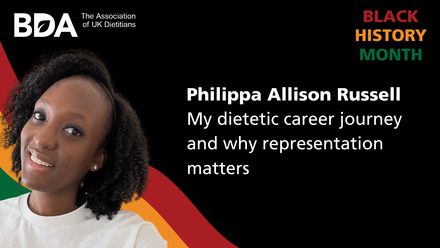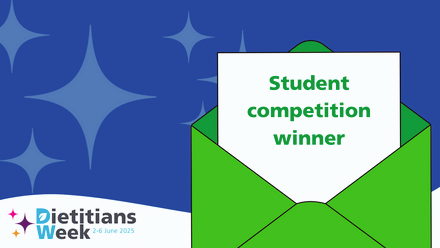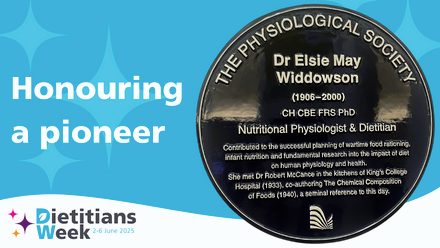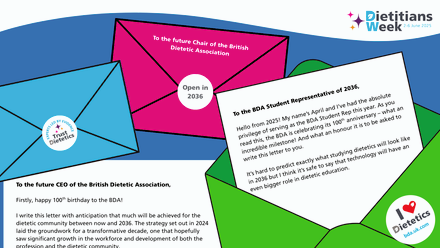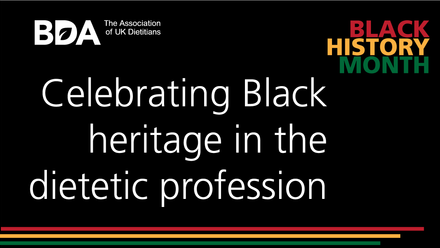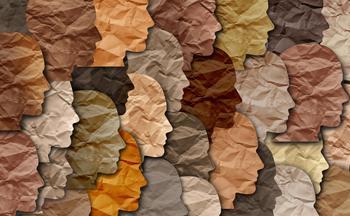
Events over the past year have highlighted a lack of diversity and inequality in many settings, including dietetics. It has been discussed more recently that our industry is not representative or has insufficient knowledge of the diversity of our patients. So, in February, a group of dietitians – Shehnaz Bashir, Jasmine Carbon, Tai Ibitoye, Belinda Namuddu, Kwayera Simpson, Harpreet Sohal, NeseTargen and myself – hosted an online event about our cultural diets. This included covering the health profiles of different ethnic minority groups, healthy eating tips and how to tailor specialist dietetic advice to traditional foods. Almost 500 people signed up to the event to learn about South Asian, Jamaican, African, African-Caribbean and plant-based diets. Over 200 people attended, and attendees appeared engaged throughout, asking relevant questions and seeming eager to learn.
Why was there a need for this event?
We all felt that the outward facing image of dietetics was not reflective of us, so we took it upon ourselves to change this image. Think of the patients we see in hospitals, clinics, care homes and schools (or videoconferencing software waiting rooms!) every day. They include people of every ethnicity, gender and age. To communicate and treat patients with the best care possible, it’s vital they see themselves within the healthcare professionals they see. As dietitians, our role is to translate information about nutrition and health into practical guidance that supports individuals with making appropriate choices.
It is important that this advice is tailored towards those of different cultures and religious needs, as it could help improve compliance and acceptance of advice given. It would also lead to cultural competency, which is our ability to meet the unique social, cultural and linguistic needs of our patients.
Existing resources for “healthy” diets are currently tailored to the Western culture and diet, likely due to the current evidence base. It is therefore important to make recommendations which patients may be more receptive to, by considering their cultures. For example, Diabetes UK recently hosted an event with dietitian Fareeha Jay, on how South Asian individuals with diabetes can adapt cultural foods to be healthier whilst considering their condition. This is an example of how dietitians can help individuals make appropriate food choices which align with their lifestyles, beliefs and culture. It emphasises that “healthy” foods do not have one aesthetic, and does not dismiss the importance of cultural foods
According to the 2011 UK census(1 - see references below), 86% of the population were White, 8% were Asian/Asian British and 3% were Black/African/Caribbean/Black British. We expect to see the proportion of non-White people increased in the most recent 2021 census. A diverse workforce is needed to reflect the ever-changing multicultural population in the UK, as the way we eat is highly influenced by many factors including our families, culture, access to foods and our beliefs or religion.
Diversity in the dietetic profession can reduce discrimination and structural inequalities(3).This is particularly important as Black and minority ethnic (BAME) groups have experienced an increase in harassment from patients, relatives or the public between 2018 and 2019 while harrassment rates have remained stable for White groups (4). From speaking with colleagues of ethnic backgrounds, many can attest to being on the receiving end of micro and macro-agressions within the workplace, both directly and indirectly due to their ethnicity. Some raised them to management with little repercussions, whilst some did not do so at all for fear of appearing aggressive
A racially diverse workforce in healthcare can deliver benefits to patients as well as the workforce themselves. Patients will have better access to healthcare professionals, reduced language barriers, enhanced quality of care and better outcomes(5). In my experience, taking time to listen to patients, finding resources in their languages and making the effort to use interpreters without assuming they can “get by” (which I have seen happen) has led to patients feeling as though they have been heard – and led to better patient outcomes.
What else have we been doing?
Many of my colleagues involved in this event have used their knowledge and shared relevant dietetic information with those who it may not ordinarily reach. This is by delivering group sessions or giving advice in religious settings such as gurdwaras, mandirs and churches attended by their communities or, in more recent times, virtually! This was delivered in their native language(s), thereby reducing language barriers usually faced by patients trying to access healthcare information, or English. We are happy to note that more recently, dietitians have appeared on podcasts to highlight the relevance of diversity, and that it is a conversation we should continue to have.
A particularly important event was held by the BDA London Branch following on from the death of George Floyd, discussing Black Lives Matter, and the need to promote diversity in the workplace and beyond. We hope this is only the beginning of such events. Some have also taken it upon themselves to adapt existing resources, such as the Eatwell Guide, to different cultures, in order for it to apply to their patients. This also shows the importance of incorporating cultural foods into the diet, and emphasising the message that “all foods fit” – that cultural foods can be synonymous with health.
What’s next?
We hope to hold more events focusing on other cultures which weren’t covered in the first webinar, such as Chinese diets or Eastern European diets. We hope to cover this in relation to specific specialities – for example the specialist BDA Renal Nutrition Group also recently shared a webinar on renal disease and low potassium traditional foods from different cultures, a further excellent example of how professional groups are promoting diversity. We hope to also incorporate how diversity looks in practice, for example, Nese, of @Baritix on Instagram, has done work in relation to bariatrics and the West African population group. Dietitians such as myself and Shehnaz have since written resources for online publications about important events such as Ramadan, sharing knowledge about different cultures and making this widely available.
What should I do?
There is so much that we can do as individuals to keep the conversation about diversity going, including:
Diversify your feed!
There are many health care professionals online that highlight the need for diversity within the profession, and issues or barriers that may be faced by those from different backgrounds. We should spend some time on our social platforms of choice and do the research to find the person or people that resonate with this message.
Don’t be afraid to learn
Don’t be afraid to ask questions of patients – in my experience, they are often happy to share. For example, I have had South Asian patients during telephone consultations refer to stuffed parathas as pancakes, as they thought I would not understand what they mean. I have had Vietnamese patients tell me they eat porridge for every meal – when I used an interpreter to find out exactly what this was, I learnt it was Chao Ga, made from stock, vegetables and fish or meat – a far more balanced diet than I initially thought!
Look within your workplace
What does your team look like? Is it representative of the population, and what is the knowledge level among colleagues about different ethnicities? It may be beneficial to share resources that you feel your colleagues may value, or create them! For example, I am currently creating an Ethnic Diets tutorial for students and colleagues within my workplace, which will enable us to share knowledge and learn from each other
Keep spreading awareness of the importance of diversity
Ensuring more diversity is a shared responsibility. The onus isn’t just on one person, or a single group or organisation. Every single person has a part to play, and this isn’t only when diversity is a buzzword or popular talking point. Amplify marginalised voices, on social media and beyond.
Take time to explore traditional or cultural foods in relation to management of disease
This can be in particular relation to specialist groups taking time to explore traditional / cultural foods from different ethnic groups in relation to disease prevention and management is a way to promote cultural diversity. For example Diabetes UK have specific resources available about fasting and Ramadan(5). Aymes have also worked with dietitians of different backgrounds to release a series of resources in relation to tailoring nutrition support information to different groups such as Chinese, South Asian Groups, Polish and African-Caribbean diets(6).
Consider becoming a mentor
Many dietitians from ethnic minority backgrounds have shared experiences of micro-aggressions and racialised behaviour throughout their career and as students. Mentorship can play a significant role by pairing ethnic minority students with mentors based on mentees’ comfort level and preference(8). This can give students a safe space to engage and share experiences, both positive and negative. Providing mentorship and activities such as increasing social media presence can increase exposure of our profession. This in turn could increase the interest of ethnic minority students towards dietetics(8), and result in more dietitians from these backgrounds.
Do not be silent in the face of discriminatory behaviour
This may occur against yourself or colleagues. Many of us who have received micro-aggressions based on our ethnicity are often silent or laugh awkwardly. The work of ending racism has fallen too heavily on those targeted by it in the past – do not just be against racism, be an anti-racist and challenge this behaviour if you see it
Promoting diversity within the field of dietetics is not one person’s responsibility. Committing to promoting change within our profession will help build a foundation for the next generation of dietitians to create a workforce that reflects our population. By engaging in these conversations,we can encourage our field to be as diverse and colourful as the diets we encourage.
References
1. GOV UK,.(2018). Population Of England And Wales.
2. The Health & Care Professions Council equality, diversity and inclusion data 2020 report
4. NHS (2020). Workforce Race Equality Standard 2020
6. Diabetes UK (2021). Ramadan and Diabetes
7. Aymes (2021). Nutrition Support and..Available at: https://aymes.com/blogs/news


